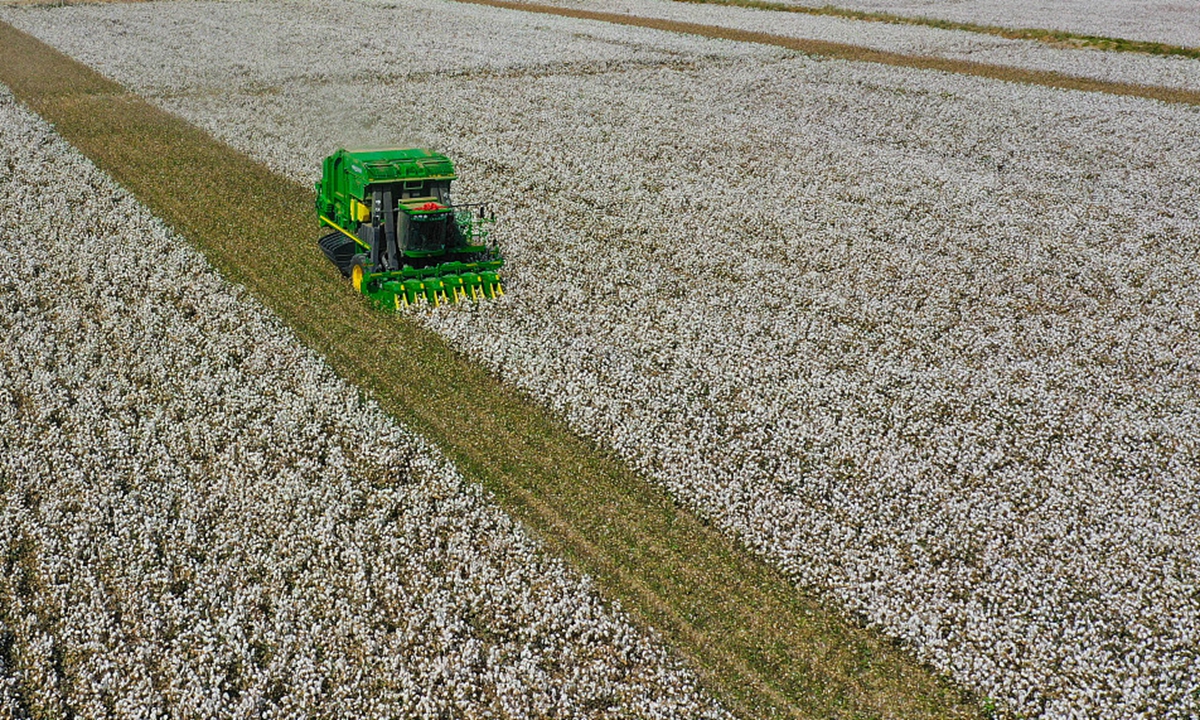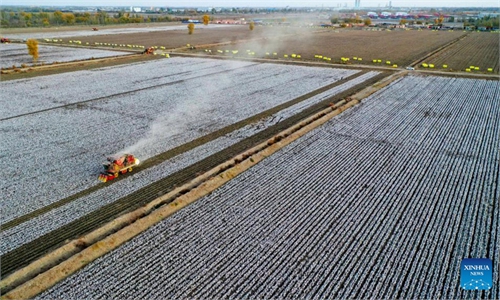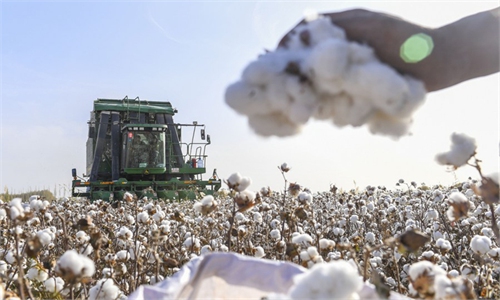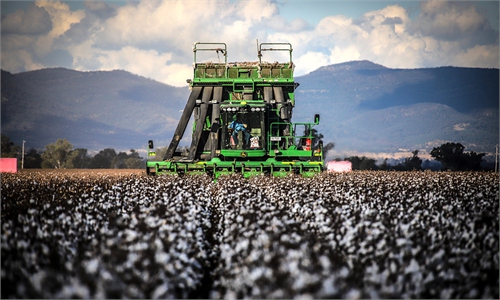
Xinjiang cotton Photo: VCG
In the vast cotton fields of Northwest China's Xinjiang Uygur Autonomous Region, modern machinery such as drones and seeding machines equipped with the BeiDou Navigation Satellite System (BDS) are galloping back and forth as spring sowing is in full swing, helped by modern science and technology.
The mechanization and intelligent agricultural measures have quickened the seeding progress and served as the best piece of evidence debunking the "forced labor" claims hyped by some Western politicians and revealed how such claims are sheer lies.
As of Friday, the whole Xinjiang region had sown cotton on land of more than 1.4 million mu (0.09 million hectares), and the progress was about 200,000 mu faster than the same period last year, according to data from the Department of Agriculture and Rural Affairs of Xinjiang.
Cotton sowing in Xinjiang this year has been carried out from south to north. With the aid of high-standard farmland and the help of satellite navigation, intelligent planters and other types of equipment and technologies, the operational efficiency and quality have been greatly lifted up, according to the Xinjiang agricultural department.
"The spring sowing has just started, and it is going smoothly," a Xinjiang-based farmer surnamed Zhang told the Global Times on Sunday.
Luo Pengshan, a manager of a local plantation drone sales company who is also a drone operator, told the Global Times on Sunday that drones are used in various scenarios of cotton planting and widely accepted by farmers for their efficiency and labor-saving functions.
"During the process of spring plowing, drones are mainly used for spraying pesticide and surveying the land," Luo said. "They will be used for spraying fertilizers later."
According to Luo, more than 90 percent of cotton plants in Aksu prefecture ̶ an important cotton producing base in the southern part of Xinjiang ̶ now use drones.
Other types of technologies such as the BDS are also widely used in covering the plastic layers on the soil and installing the drip irrigation in a precise manner.
"Nowadays, Xinjiang cotton is basically sown by the BeiDou system. It ensures that the sowing is straight, and makes the follow-up field management and harvesting more convenient," a staffer surnamed Liu from a Xinjiang-based cotton enterprise told the Global Times on Sunday.
The region will launch a campaign to improve the quality and efficiency of cotton production this year, and its total cotton output will remain at around five million tons, according to the Department of Agriculture and Rural Affairs of Xinjiang.
In 2022, Xinjiang's cotton planting area reached 37.45 million mu, accounting for 83.2 percent of China's total cotton planting area. Its cotton output reached 5.39 million tons, accounting for 90.2 percent of the nation's total, a record high.
Xinjiang's total cotton production, per unit yield, planted area and commodity allocation have ranked first in China for 28 consecutive years.



